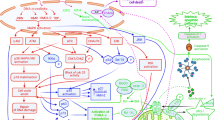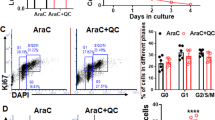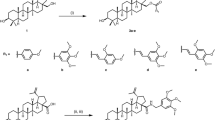Abstract
SDZ 280-446 is a semi-synthetic derivative of a natural cyclic peptolide. Its ability to sensitise in vitro tumour cells whose resistance is due to P-glycoprotein-mediated anticancer-drug efflux was shown using four different pairs of parental drug-sensitive (Par-) and multidrug-resistant (MDR-) cell lines, from three different species (mouse, human, Chinese hamster) representing four different cell lineages (monocytic leukaemia, nasopharyngeal epithelial carcinoma, colon epithelial carcinoma, ovary fibroblastoid carcinoma), and using four different drug classes (colchicine, vincristine, daunomycin/doxorubicin and etoposide). By measuring its capacity to restore normal drug sensitivity of MDR-cells in culture in vitro, it appeared that SDZ 280-446 belongs to the same class of very potent chemosensitisers as the cyclosporin derivative SDZ PSC 833: both are about one order of magnitude more active than cyclosporin A (CsA), which is itself about one order of magnitude more active than other known chemosensitisers (including verapamil, quinidine and amiodarone which have already entered clinical trials in MDR reversal). Low concentrations of SDZ 280-446 could also restore cellular daunomycin retention in MDR-P388 cells to the levels found in the Par-P388 cells. SDZ 280-446 was also effective as a chemosensitiser when given orally in vivo. In a syngeneic mouse model, combined therapy with vinca alkaloids given i.p. and SDZ 280-446 given per os for 5 consecutive days significantly prolonged the survival of MDR-P388 tumour-bearing mice, when compared with mice receiving vinca alkaloids alone. Another protocol, using three cycles of i.p. doxorubicin at 4 day intervals, could also not increase MDR-P388 tumour-bearing mouse survival unless the mice received SDZ 280-446 orally 4 h before each doxorubicin injection. Though only very few combined therapy treatment protocols have been tested so far, clear increases in survival time of MDR-tumour-bearing mice were regularly obtained, leaving hope for major improvement of the therapy using other dosing schedules.
This is a preview of subscription content, access via your institution
Access options
Subscribe to this journal
Receive 24 print issues and online access
$259.00 per year
only $10.79 per issue
Buy this article
- Purchase on Springer Link
- Instant access to full article PDF
Prices may be subject to local taxes which are calculated during checkout
Similar content being viewed by others
Author information
Authors and Affiliations
Rights and permissions
About this article
Cite this article
Loor, F., Boesch, D., Gavériaux, C. et al. SDZ 280-446, a novel semi-synthetic cyclopeptolide: in vitro and in vivo circumvention of the P-glycoprotein-mediated tumour cell multidrug resistance. Br J Cancer 65, 11–18 (1992). https://doi.org/10.1038/bjc.1992.3
Issue Date:
DOI: https://doi.org/10.1038/bjc.1992.3
This article is cited by
-
Reversal of multidrug resistance by novel cyclosporin A analogues and the cyclopeptolide SDZ 214-103 biosynthesized in vitro
Journal of Cancer Research and Clinical Oncology (1995)
-
Novobiocin modulates colchicine sensitivity in parental and multidrug-resistant B16 melanoma cells
Journal of Cancer Research and Clinical Oncology (1994)



